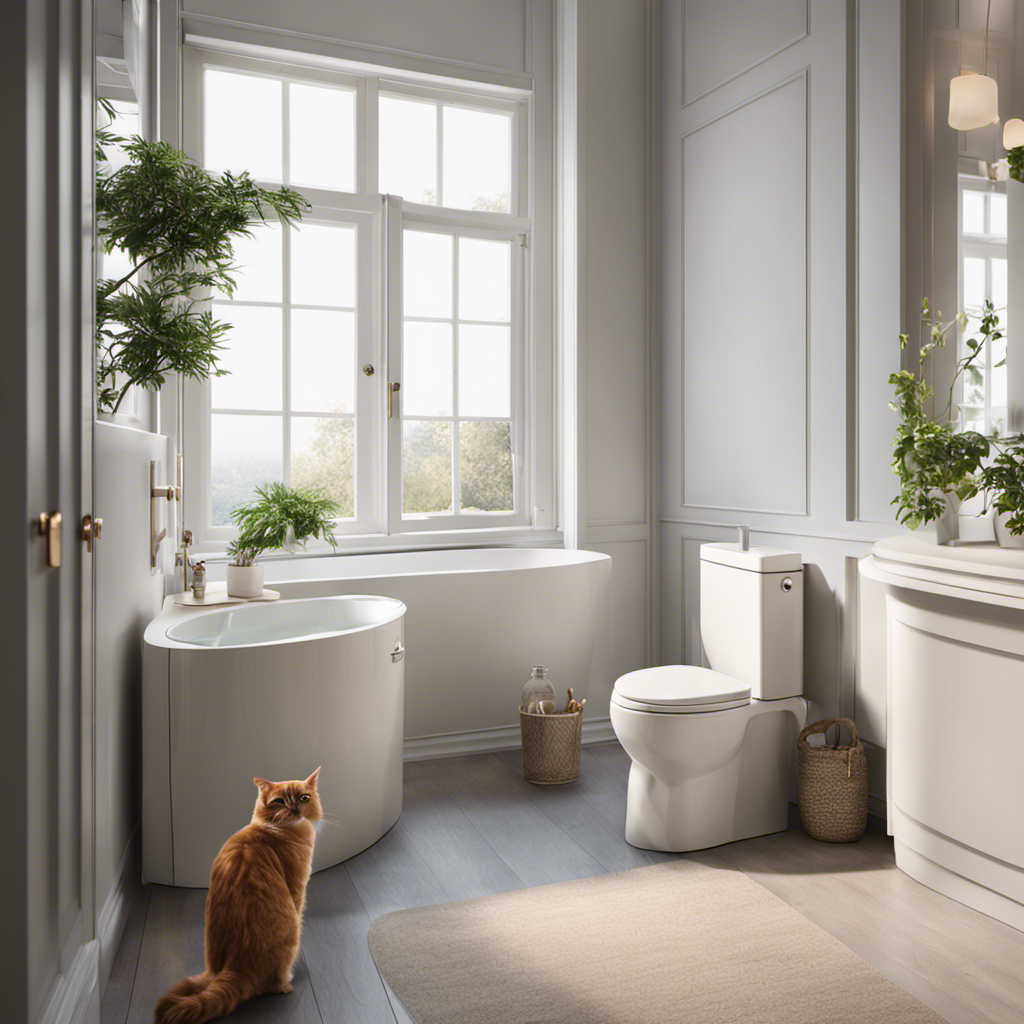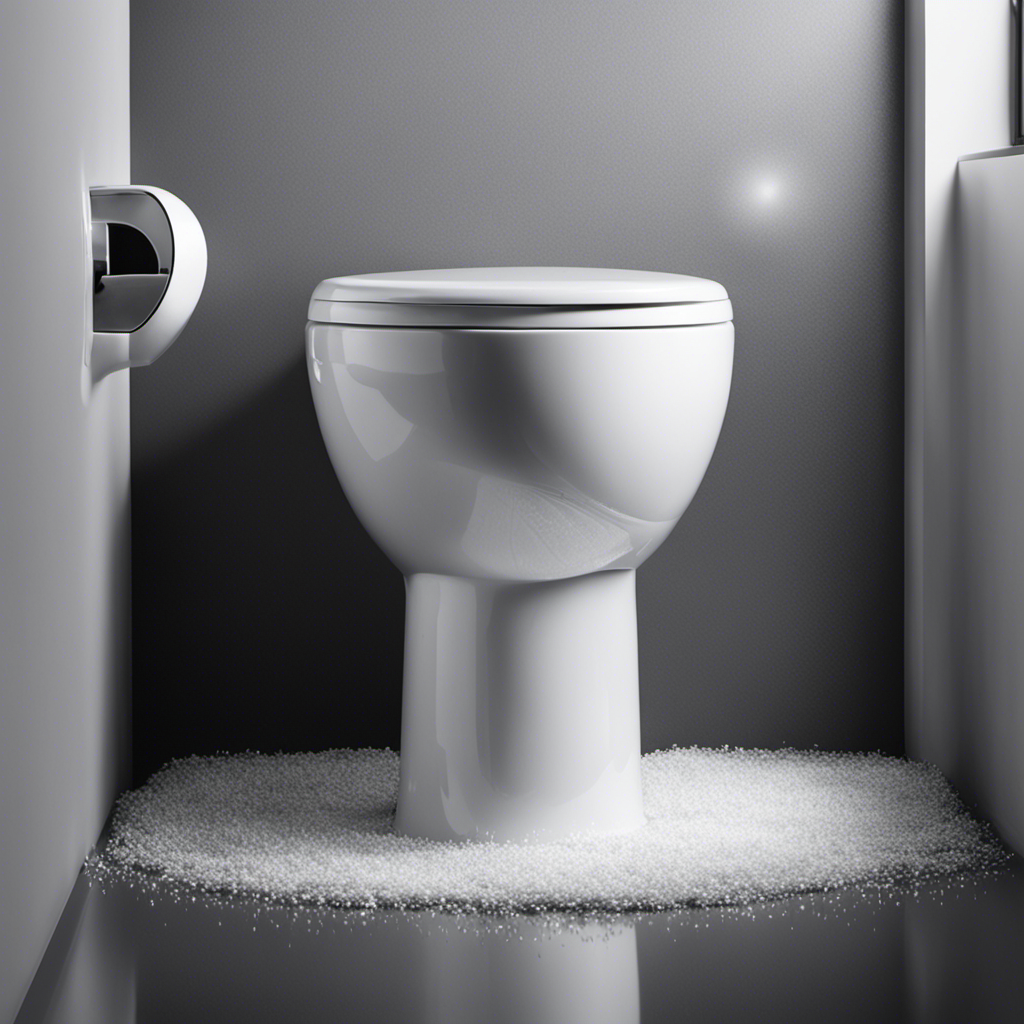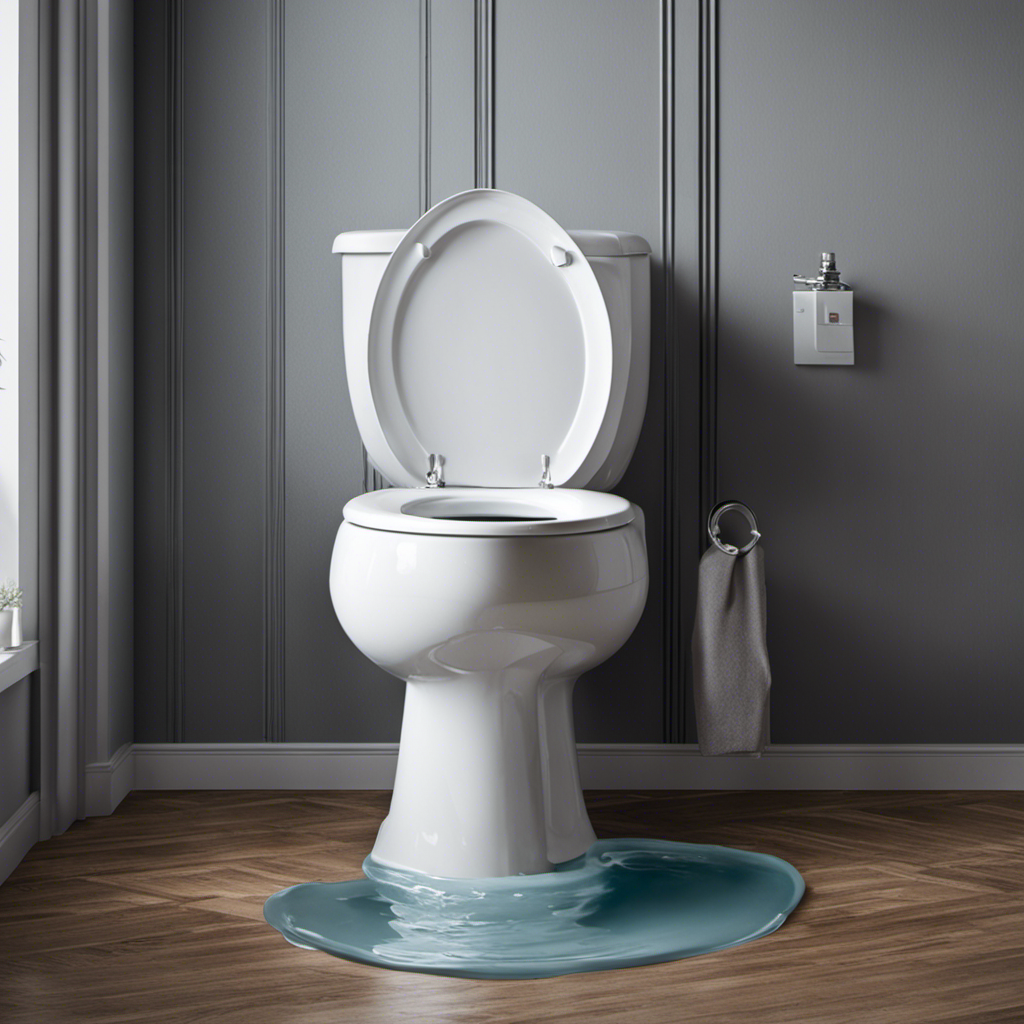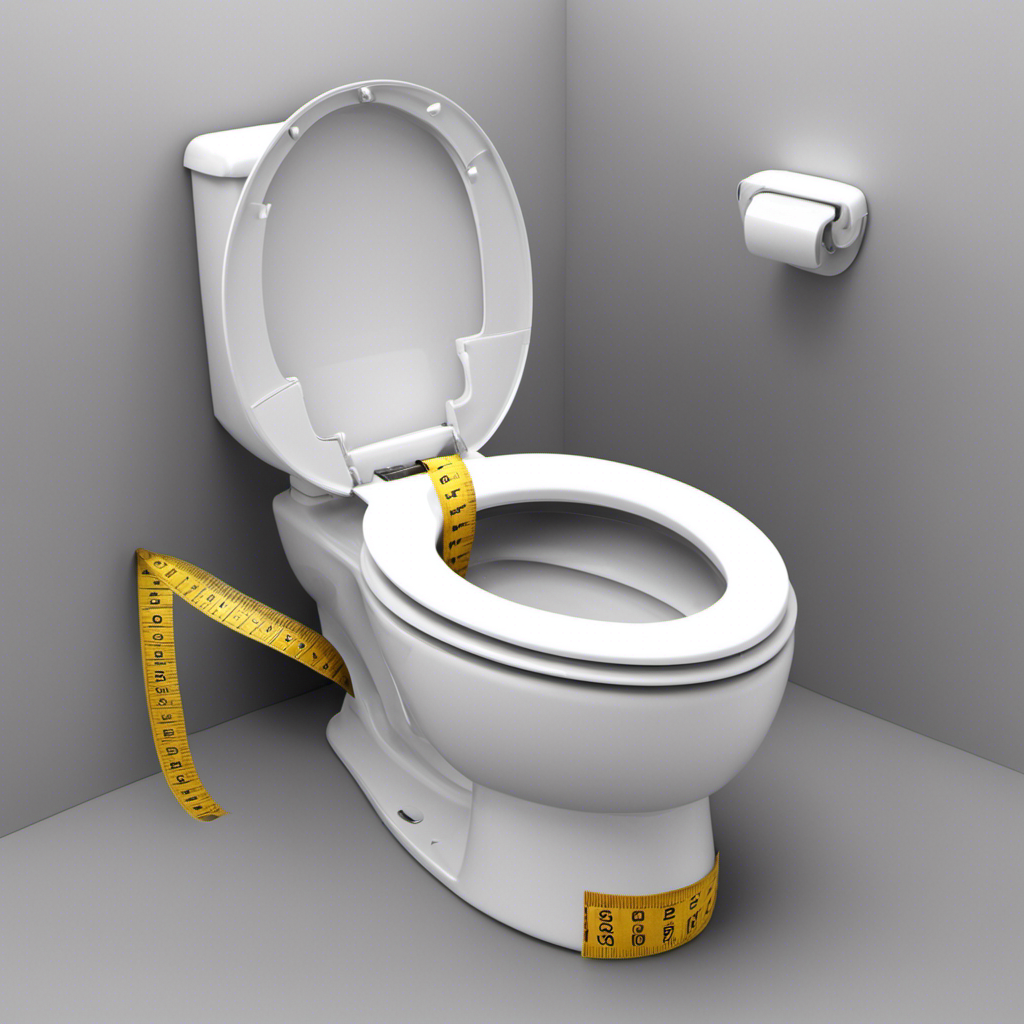I’ve been there – you’re in a hurry, and suddenly your toilet is clogged. It’s a frustrating situation that needs a quick solution.
In this article, I’ll show you how to unclog a toilet fast with just a few simple steps. We’ll explore the common causes of toilet clogs, the tools and supplies you’ll need, and a step-by-step guide to get your toilet back in working order.
Plus, I’ll share some common mistakes to avoid and tips to prevent future clogs. Let’s dive in and get that toilet unclogged in no time!
Key Takeaways
- Using a plunger is an effective and fast method to unclog a toilet.
- A toilet auger can be used for more stubborn clogs.
- Chemical drain cleaners and a mixture of baking soda and vinegar can also help unclog a toilet quickly.
- If the clog persists, it is advisable to call a professional plumber.
The Causes of Toilet Clogs
Toilet clogs can happen due to a variety of reasons. Excessive toilet paper usage or flushing non-flushable items are common causes. When too much toilet paper is used in one flush, it can overwhelm the plumbing system and cause a clog. Flushing items like paper towels, baby wipes, or feminine hygiene products can also lead to clogs. These items are not designed to break down in water.
To prevent toilet clogs, it is important to use a moderate amount of toilet paper and avoid flushing anything other than toilet paper and human waste. Regular maintenance can also help prevent clogs by clearing any potential blockages. Using a plunger or drain snake can be effective in clearing clogs.
Tools and Supplies You’ll Need
First, you’ll need a plunger and a bucket to effectively tackle the clog. These tools are essential for any DIY unclogging job. Here are the items you’ll need:
-
Toilet Plunger: A toilet plunger is specifically designed to create a seal around the drain opening, allowing you to apply pressure and dislodge the clog.
-
Bucket: Having a bucket on hand is crucial for collecting any excess water that may overflow during the unclogging process.
-
Drain Snake: If the plunger doesn’t do the trick, a drain snake can be used to reach deeper into the pipes and break up stubborn clogs.
-
Rubber Gloves: It’s important to protect your hands from any potential mess while working on unclogging the toilet.
Now that you have the necessary tools and supplies, let’s move on to the step-by-step guide to unclogging a toilet.
Step-by-Step Guide to Unclogging a Toilet
Now that you have all the necessary tools and supplies, let’s begin by assessing the severity of the clog.
To unclog a toilet effectively, it’s important to understand the extent of the problem. Start by flushing the toilet. If the water level rises close to the rim and drains slowly, you likely have a partial clog. In this case, using a plunger can be an effective toilet unclogging hack.
Position the plunger over the drain hole and plunge vigorously several times. For more stubborn clogs, you may need to try a DIY toilet repair method like using a toilet auger. Insert the auger into the drain hole and rotate the handle clockwise, breaking up the clog.
These simple steps should help you resolve most toilet clogs on your own.
Common Mistakes to Avoid
When it comes to unclogging a toilet, there are several common mistakes that people should avoid.
First and foremost, using the wrong plunger technique can actually make the clog worse instead of solving the problem.
Additionally, using excessive force can lead to damage to the toilet or even injury to the person attempting to unclog it.
Finally, neglecting proper maintenance can contribute to recurring clogs and other plumbing issues.
It is important to be aware of these mistakes and take the necessary precautions to effectively unclog a toilet without causing any further damage.
Wrong Plunger Technique
To unclog a toilet fast, it is crucial to use the correct plunger technique. Here are four common plunger technique mistakes to avoid:
-
Holding the plunger vertically: Many people make the mistake of holding the plunger upright, which reduces its effectiveness. Always hold the plunger at an angle to create a better seal.
-
Not creating a tight seal: A tight seal is essential for generating the proper suction. Ensure that the plunger completely covers the drain opening to prevent air from escaping.
-
Using too much force: While it may be tempting to apply excessive force, it can actually worsen the clog. Start with gentle, steady plunging motions and gradually increase the intensity if necessary.
-
Using the wrong type of plunger: Traditional cup plungers work best for toilets. Avoid using sink plungers or other plunger alternatives, as they may not provide enough suction power.
Using Excessive Force
If you use too much force, it may actually worsen the clog in your toilet. When faced with a stubborn clog, it’s natural to want to apply more pressure to get the job done. However, using excessive force can lead to disastrous consequences. Instead, consider trying these DIY solutions before resorting to brute force:
| Solution | Steps |
|---|---|
| Hot Water and Dish Soap | 1. Pour a pot of hot water into the toilet bowl. 2. Add a few squirts of dish soap. 3. Let it sit for a few minutes. 4. Use a plunger to gently unclog the toilet. |
| Baking Soda and Vinegar | 1. Sprinkle baking soda into the toilet bowl. 2. Pour vinegar over the baking soda. 3. Let it fizz for a few minutes. 4. Use a plunger to unclog the toilet using gentle force. |
| Toilet Auger | 1. Insert the toilet auger into the toilet bowl. 2. Rotate the handle clockwise to break up the clog. 3. Pull the auger out. 4. Flush the toilet to check if the clog is cleared. |
Neglecting Proper Maintenance
After discussing the dangers of using excessive force, it is important to address the issue of neglecting proper maintenance when it comes to unclogging a toilet. Neglecting regular cleaning and ignoring warning signs can lead to more serious clogs and potential damage to the plumbing system.
To prevent this from happening, it is crucial to follow these steps:
- Regularly clean the toilet bowl and remove any debris or buildup.
- Pay attention to warning signs such as slow drainage or gurgling sounds.
- Use a plunger at the first sign of a clog to prevent it from worsening.
- Consider using preventive measures such as enzyme-based cleaners to keep the pipes clear.
Tips for Preventing Future Toilet Clogs
Toilet maintenance is a crucial aspect of ensuring a functional and clog-free bathroom. In this section, we will discuss some useful tips to help you avoid future toilet clogs.
Toilet Maintenance Tips
Remember to regularly clean your toilet bowl to prevent any future clogs. Here are some important tips to keep your toilet in good working order:
-
Use the right toilet cleaning products: Choose cleaners specifically designed for toilets to effectively remove stains, mineral deposits, and bacteria. Avoid using abrasive cleaners or bleach, as they can damage the toilet’s surface.
-
DIY toilet repairs: Learn basic toilet repair skills to address minor issues like a running toilet or a loose handle. This will save you time and money by avoiding unnecessary service calls.
-
Inspect and replace worn parts: Regularly inspect the toilet components such as the flapper, fill valve, and flush valve. Replace any worn or damaged parts to ensure proper functioning.
-
Maintain proper water levels: Adjust the water level in the toilet tank to the recommended level indicated by the manufacturer. This helps prevent overflow and reduces the risk of clogs.
Avoiding Future Clogs
To prevent future clogs, make sure you dispose of hygiene products properly and avoid flushing items that can easily block the toilet. It is important to develop proper flushing techniques to maintain a functional and clog-free toilet. To help you understand the importance of this, here is a table highlighting the benefits of using toilet paper alternatives:
| Importance of Proper Flushing Technique | Benefits of Using Toilet Paper Alternatives |
|---|---|
| Prevents clogs and costly repairs | Environmentally friendly |
| Maintains proper water flow | Reduces risk of irritation and allergies |
| Extends the lifespan of your toilet | Saves money in the long run |
By implementing these practices, you can avoid future clogs and keep your toilet running smoothly. However, if you encounter persistent clogs even after following these guidelines, it may be time to call a professional for assistance.
[Transition to subsequent section: ‘When to Call a Professional’]When to Call a Professional
If you’ve tried all the DIY methods and the clog still persists, it might be time to call a professional. Hiring a professional plumber can save you time, money, and frustration. Here are four signs that indicate it’s time to hire a professional:
-
Persistent clogs: If you’ve tried multiple methods to unclog your toilet and the problem keeps coming back, it’s a sign that there may be a more serious underlying issue that requires professional attention.
-
Multiple clogged fixtures: If you’re experiencing clogs in multiple fixtures throughout your home, such as sinks or showers, it could be a sign of a larger plumbing problem that needs professional expertise to diagnose and fix.
-
Foul odors: If you notice persistent foul odors coming from your toilet, it could indicate a sewer line issue that requires professional help to address.
-
Slow drainage: If your toilet is draining slowly or not at all, it could be a sign of a blockage further down in the plumbing system. A professional plumber has the tools and knowledge to effectively clear the blockage and restore proper drainage.
Frequently Asked Questions
How Do I Know if My Toilet Is Clogged?
To know if my toilet is clogged, I look for signs like water rising to the rim or slow drainage. Causes of toilet clogs can include excessive toilet paper, foreign objects, or a blocked sewer line.
Can I Use a Plunger to Unclog a Toilet?
Yes, I can use a plunger to unclog a toilet. It is one of the most effective and efficient methods. However, there are alternative methods and best practices to consider as well.
Are There Any Home Remedies I Can Try Before Using a Plunger or a Toilet Auger?
Before resorting to a plunger or toilet auger, there are several home remedies and alternative methods for unclogging toilets. These can include using hot water, baking soda and vinegar, or a combination of dish soap and hot water.
What Should I Do if the Clog Is Not Clearing Even After Using a Plunger?
If the clog is stubborn even after using a plunger, it’s time to explore alternative methods. However, if all else fails, it’s best to call a professional plumber who can tackle the issue efficiently.
How Can I Prevent My Toilet From Clogging in the Future?
To prevent future clogs, it’s important to take preventive measures and maintain the toilet properly. Regularly cleaning the toilet, avoiding flushing non-flushable items, and using a plunger when needed can help keep the toilet functioning smoothly.
Conclusion
So there you have it, folks! The ultimate guide to unclogging a toilet fast.
Armed with the right tools and a step-by-step plan, you can tackle any clog that comes your way. Just remember to avoid those common mistakes and take preventive measures to keep those pesky clogs at bay.
And if all else fails, don’t hesitate to call in the professionals. Because let’s face it, we all deserve a little help when it comes to dealing with our toilet troubles.
Happy unclogging!










